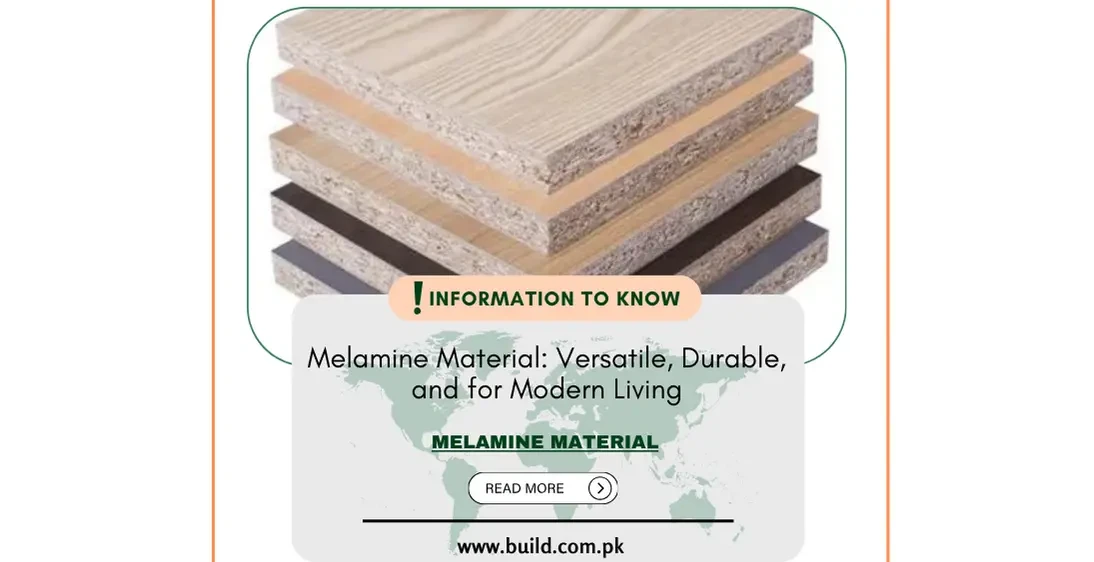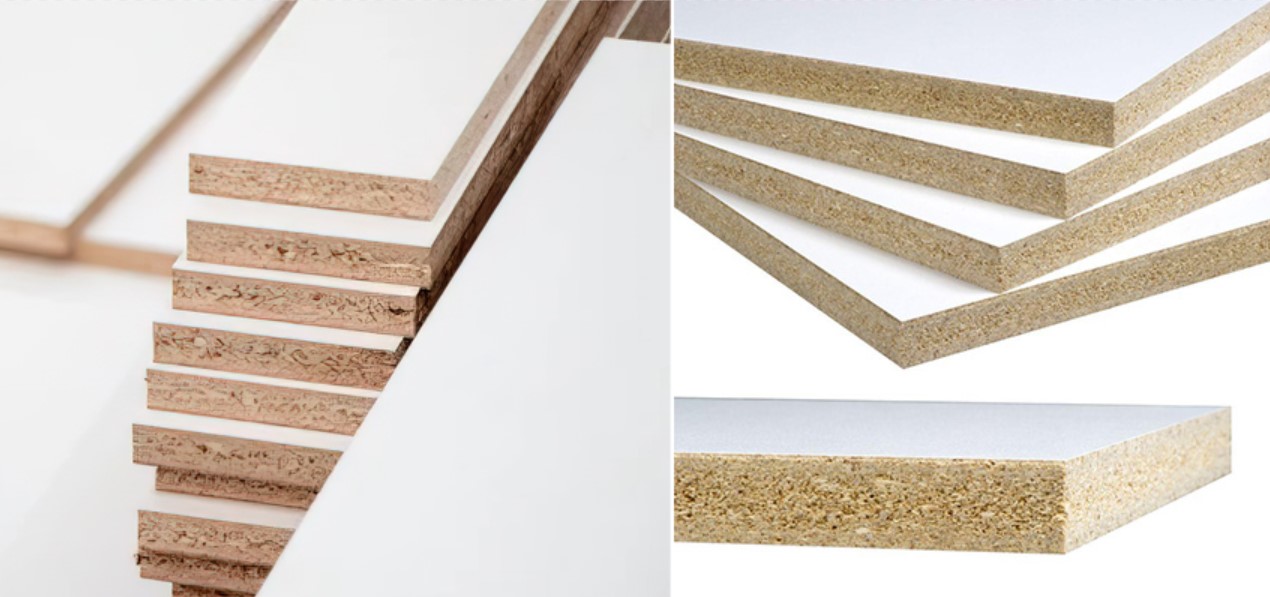Melamine Material: Versatile, Durable, and for Modern Living

Introduction:
Melamine
is a popular material known for its versatility, durability, and aesthetic
appeal. It is widely used in various applications, including kitchenware,
furniture, and construction. In this comprehensive guide, we will delve into
the properties, uses, benefits, and maintenance of melamine material, providing
you with a thorough understanding of why it has become an essential part of
modern living.
What is Melamine?
Melamine
is an organic compound made from urea and formaldehyde, resulting in a hard,
thermosetting plastic. It is often used as a laminate or coating material for
various surfaces, providing a durable and attractive finish.
Melamine's
chemical structure gives it unique properties that make it ideal for a wide
range of applications. It is typically manufactured in the form of melamine
resin, which is then applied to a substrate, such as particleboard or MDF
(medium-density fiberboard). This combination creates a strong, heat-resistant,
and aesthetically pleasing surface that is used extensively in both residential
and commercial settings.

Properties of Melamine Material
Durability:
Melamine is known for its exceptional durability. It is resistant
to scratches, stains, and heat, making it ideal for surfaces that endure daily
wear and tear.
The
hard, thermosetting nature of melamine makes it highly resistant to physical
damage. Unlike many other materials, melamine can withstand impacts without
easily chipping or cracking. This durability extends the lifespan of products
made with melamine, making it a cost-effective choice for long-term use.
Heat and Chemical Resistance:
Melamine's resistance to heat and chemicals makes
it a preferred choice for kitchenware and laboratory equipment.
Melamine
can withstand temperatures up to 300°F (150°C) without deforming or degrading.
This heat resistance makes it suitable for kitchen countertops, cabinetry, and
cooking utensils. Additionally, melamine's resistance to chemicals ensures that
it remains unaffected by common household cleaners and spills, maintaining its
appearance and integrity over time.
Aesthetic Versatility:
Melamine is available in a wide range of colors,
patterns, and finishes, allowing for endless design possibilities.
From
solid colors to wood grain patterns, melamine can mimic the look of natural
materials like wood and stone at a fraction of the cost. This versatility makes
it a popular choice for furniture and cabinetry, as it can be tailored to match
various interior design styles. The finish can range from matte to high gloss,
providing options to suit different aesthetic preferences.
Lightweight:
Despite its durability, melamine is relatively lightweight, making
it easy to handle and install.
The
lightweight nature of melamine-coated boards simplifies transportation and
installation processes. This is particularly advantageous in construction and
furniture manufacturing, where ease of handling can significantly reduce labor
costs and time.
Common Uses of Melamine Material
Kitchenware:
Melamine
is widely used in the production of kitchenware, including plates, bowls, cups,
and utensils.
Melamine
kitchenware is prized for its durability and resistance to breaking, making it
ideal for everyday use, especially in households with children. Its ability to
withstand high temperatures without transferring heat to the user is another
reason it is popular for tableware. Moreover, melamine's lightweight nature
makes it easy to handle and store, enhancing its practicality in the kitchen.
Furniture:
Melamine-coated
boards are commonly used in the manufacture of furniture, such as cabinets,
shelves, and desks.
Furniture
made from melamine-coated boards offers an excellent balance of durability and
aesthetics. The smooth, non-porous surface is easy to clean and maintain,
making it ideal for high-traffic areas like kitchens, bathrooms, and offices.
Additionally, melamine's resistance to moisture prevents warping and swelling,
which is crucial for furniture longevity. Its availability in various colors
and patterns allows for customization to suit different interior design themes.
Construction:
In
construction, melamine is used for laminates, wall panels, and flooring.
Melamine
laminates provide a cost-effective and durable alternative to traditional
building materials. They are often used as a finish for particleboard or MDF,
creating a robust and visually appealing surface. Melamine wall panels are
ideal for creating sleek, modern interiors, while melamine flooring offers a
resilient and low-maintenance option for both residential and commercial
spaces. The material's resistance to moisture and chemicals makes it suitable
for a variety of environments, including kitchens, bathrooms, and laboratories.
Office and Commercial Spaces:
Melamine
is frequently used in the production of office furniture, partitions, and
commercial display units.
In
office settings, melamine-coated furniture provides a professional and durable
solution that can withstand the rigors of daily use. Desks, cabinets, and
partitions made from melamine are easy to clean and maintain, contributing to a
tidy and organized workspace. In commercial environments, melamine display
units and fixtures offer a sleek and attractive way to showcase products,
enhancing the overall shopping experience for customers.
Benefits of Using Melamine Material
Cost-Effectiveness:
Melamine is a budget-friendly material that offers the look
of more expensive materials like wood and stone without the high price tag.
By
mimicking the appearance of premium materials, melamine allows homeowners and
businesses to achieve a high-end look at a fraction of the cost. This makes it
an attractive option for large-scale projects and budget-conscious consumers.
Additionally, the durability of melamine reduces the need for frequent
replacements, further enhancing its cost-effectiveness.
Easy Maintenance:
Melamine surfaces are easy to clean and require minimal
maintenance, saving time and effort.
The
non-porous surface of melamine prevents the absorption of liquids and stains,
making it easy to wipe clean with a damp cloth and mild detergent. This ease of
maintenance is particularly beneficial in high-traffic areas such as kitchens,
bathrooms, and commercial spaces. Furthermore, melamine's resistance to
scratches and impact ensures that it retains its appearance over time, reducing
the need for repairs and refinishing.
Environmental Benefits:
Melamine can be produced from recycled materials,
contributing to sustainability efforts.
Many
manufacturers use recycled wood fibers and other materials in the production of
melamine-coated boards, reducing the demand for virgin resources. This
sustainable approach minimizes waste and promotes the use of eco-friendly
materials in construction and manufacturing. Additionally, the durability and
long lifespan of melamine products reduce the frequency of replacements,
further decreasing environmental impact.
Tips for Choosing and Maintaining Melamine Material
Choosing Melamine Products:
- Quality: Look for high-quality melamine products from reputable manufacturers to ensure durability and performance. Check for certifications or standards that guarantee the material's quality and safety.
- Design: Choose colors and patterns that complement your existing décor and meet your design preferences. Consider the intended use and environment when selecting finishes and textures.
- Thickness:
Opt for thicker melamine-coated boards for added strength and stability,
especially for furniture and structural applications.
Maintaining Melamine Surfaces:
- Cleaning: Use a damp cloth and mild detergent to clean melamine surfaces. Avoid abrasive cleaners or scouring pads that can scratch the surface. For stubborn stains, a mixture of baking soda and water can be effective.
- Avoid Heat Damage: While melamine is heat-resistant, it is best to use trivets or heat pads to protect surfaces from hot pots and pans. Prolonged exposure to high temperatures can cause discoloration or damage.
- Prevent
Scratches: Use placemats and coasters to protect melamine surfaces from
scratches caused by sharp objects. Regularly inspect surfaces for any signs of
wear and address them promptly to prevent further damage.
Conclusion:
Melamine material is a versatile, durable, and cost-effective solution for a wide range of applications. Its unique properties make it suitable for kitchenware, furniture, construction, and commercial use, offering an attractive and practical alternative to more expensive materials. By understanding the properties, benefits, and maintenance of melamine, you can make informed decisions about incorporating this material into your home or business. Whether you are looking for stylish kitchenware, durable furniture, or high-quality construction materials, melamine provides a reliable and aesthetically pleasing option that meets the demands of modern living.









